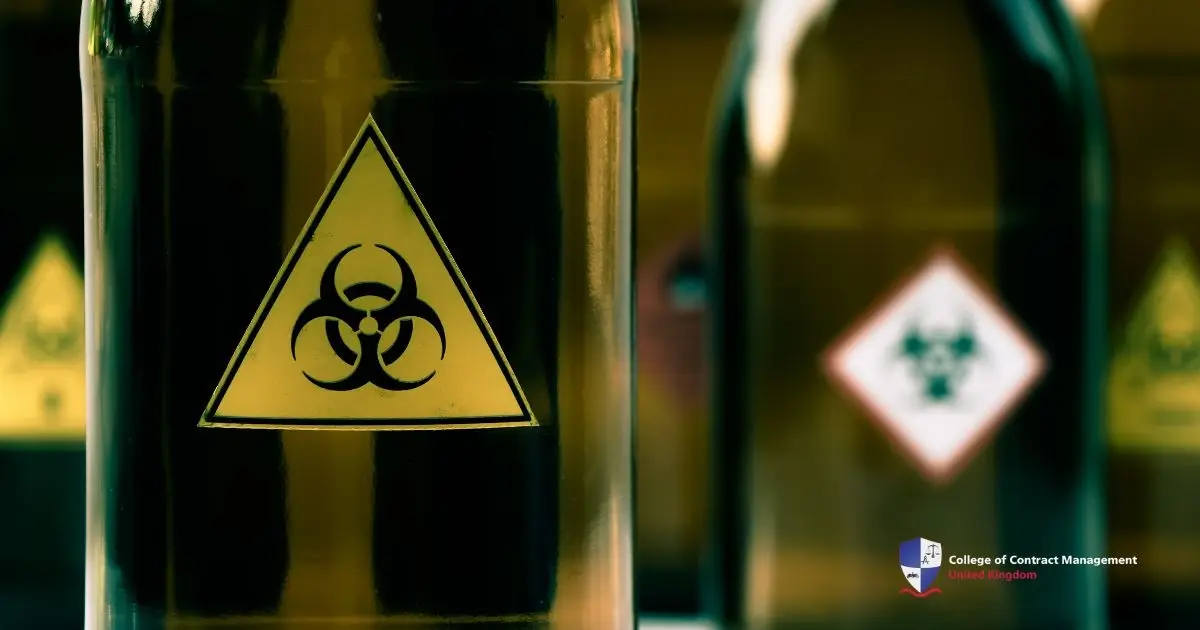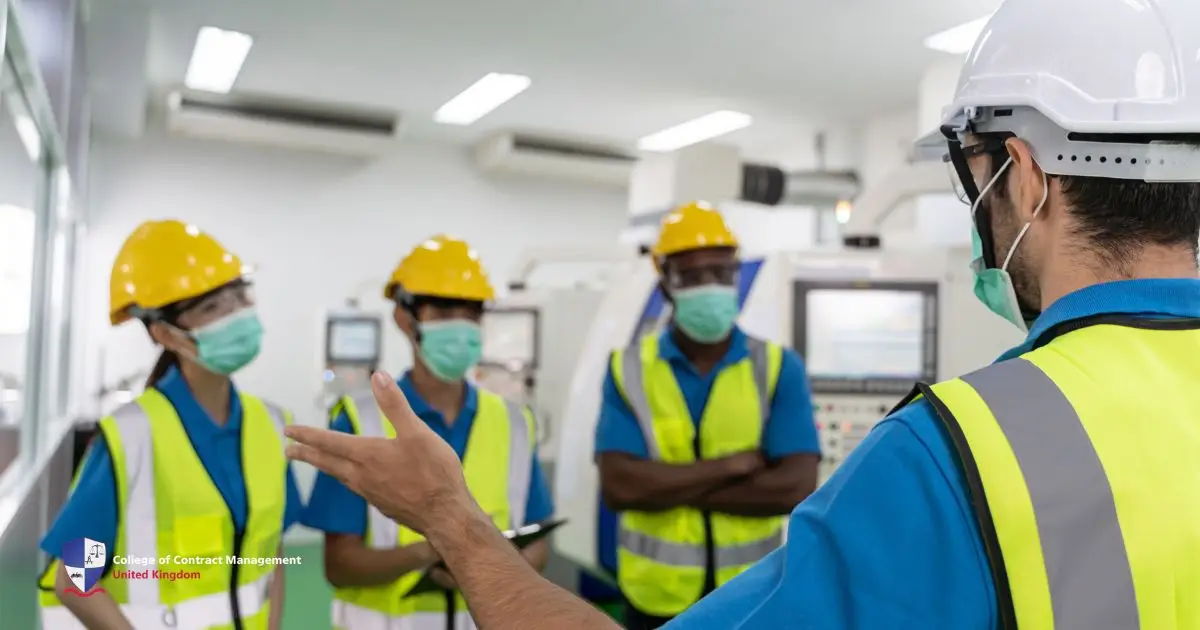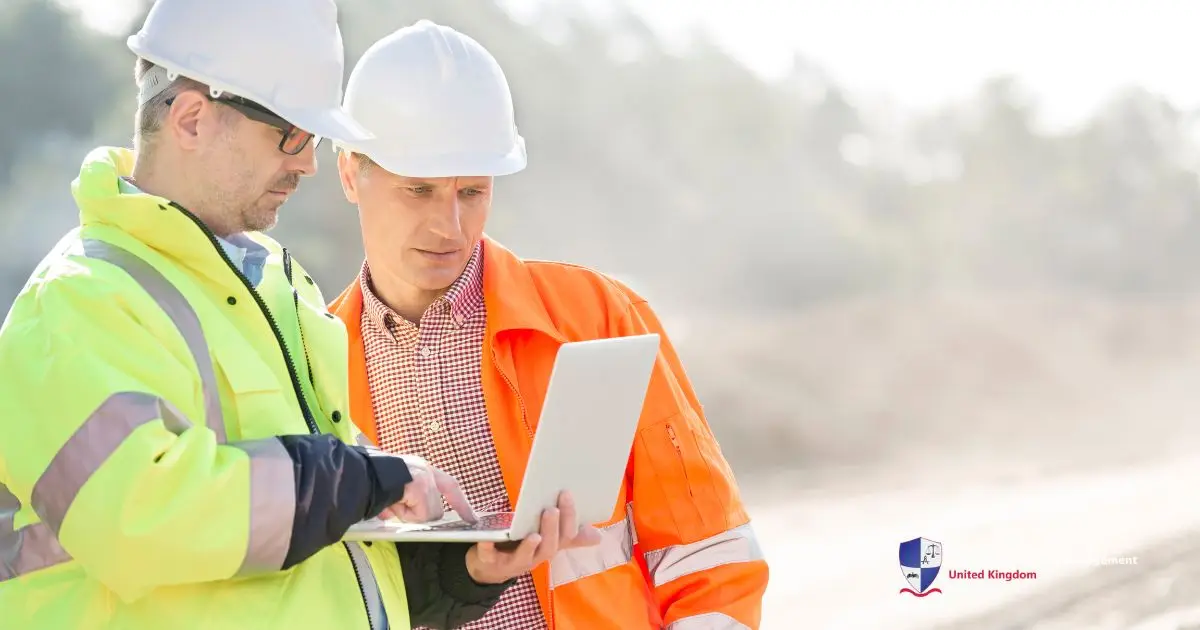Construction sites are bustling places where many activities take place each day. They build essential infrastructure, but they can also expose workers to hazardous substances. So, if these materials are not managed properly, they can pose serious risks. Hence, it’s crucial to be aware of the safety measures in place. After all, safety comes first.
In construction, you encounter various substances like chemicals, dust, and some building materials. Due to this, recognising these risks is crucial for a safer workplace. First, here's everything you need to know about how these dangers can affect workers. Then, here are also the simple ways to manage these risks. Lastly, education plays a key role in reducing hazards.
What are hazardous substances in construction?
Hazardous substances are materials that can harm your health if not handled correctly. For example, on construction sites, you may find asbestos, lead, and silica dust. Additionally, there are chemicals like solvents, paints, and adhesives used when building. For this reason, it’s crucial to be careful and aware of these materials to stay safe at work.
Being around harmful substances can cause serious health issues. For example, people might get breathing problems or skin rashes. There’s also a chance of getting long-term illnesses. Because of this, it’s important to be aware of these dangers. By staying informed, teams can take the right precautions. This way, they can then protect workers better and create a safer workplace.
Common types of hazardous substances on sites
To manage risks well, it’s essential to know what substances are on your site. First, identify them. This step is crucial for safety. You might encounter common hazardous materials in construction. For example, chemicals used for cleaning, paints, and solvents can pose serious risks. Furthermore, some materials, like asbestos, may also be present. To sum it up, understanding these hazardous substances is vital for keeping a safe work environment.
- Asbestos: Found in older buildings, it can cause lung diseases.
- Lead: Used in paints and pipes, it can damage the nervous system.
- Silica Dust: Created during cutting or drilling materials like concrete.
- Solvent: Present in paints and cleaning agents, harmful when inhaled.
- Cement Dust: Can irritate the skin and respiratory system.
- Wood Dust: A by-product of sanding and cutting wood.
Understanding these materials helps teams stay safe. When everyone knows the potential risks, they can take the right precautions, such as taking precautions against hazardous substances. Also, regular training sessions keep safety in the spotlight. By practising often, team members are then better prepared for any situation. Additionally, assessments help reinforce what they’ve learnt. As a result of this, everyone is on the same page regarding safety.
The Risk of Hazardous Substances
Handling hazardous materials can be dangerous. Due to this, it’s essential to take safety seriously. Without the right precautions, workers can face immediate problems like skin rashes. Moreover, long-term exposure may lead to serious illnesses, including cancer. Therefore, it’s crucial to use protective gear and follow safety rules. Doing so creates a safer environment for everyone involved in the work.
When people handle dangerous chemicals without protection, they can get hurt. As a result, these injuries can be serious. Ignoring these risks puts workers at risk, which isn't fair to them. Additionally, it can cause project delays. Companies might also face legal trouble, which is frustrating. To sum it up, everyone should prioritise risk management and safety not only to avoid these issues but also to keep projects on track.
How to Manage Risks Effectively
Keeping people safe when dealing with hazardous substances is really important. A good way to do this is by being proactive. First, assess the risks. Afterwards, put safety measures in place. This could mean using protective gear or proper storage. Also, make sure everyone knows the safety protocols. Regular training keeps everyone informed. Finally, always stay alert and ready to act if something goes wrong.
- Conduct Risk Assessment: Identify all substances on site.
- Use Proper Storage: Store chemicals safely to prevent leaks or spills.
- Provide Personal Protective Equipment (PPE): Ensure workers have gloves, masks, and goggles.
- Train Workers: Teach employees about safe handling procedures.
- Regular Monitoring: Check air quality and exposure levels.
To stay safe around hazardous substances, you can take some simple steps. First, always wear protective gear, like gloves and masks. Next, keep work areas well-ventilated. This will then help reduce harmful fumes. Moreover, store chemicals properly in labelled containers. It’s vital to know how to handle spills or accidents. By following these tips, you can lower the risks and protect yourself better. Stay safe.
Health and Safety Management in Construction
Managing health and safety is crucial for dealing with hazardous substances. It involves setting up policies and procedures. This helps to create a safe working environment. Without these measures, risks can increase. Therefore, it's important to stay proactive. By focusing on safety, employers can then protect their staff. In turn, this leads to a more secure workplace for everyone involved.
Good safety management means clear communication and routine inspections. It also involves continuous training. For this reason, employers should focus on the health of their workers. They can do this by following rules and applying best practises. When everyone stays informed and prepared, it creates a safer work environment. Overall, prioritising safety leads to better outcomes for all.
Key Principles of Safety Management
Proper health and safety management focuses on key principles. Firstly, it promotes a safe environment for everyone. Secondly, it encourages clear communication and teamwork. Additionally, it emphasises regular training to keep skills sharp. Because of these concerns, ongoing assessments are required to spot potential issues. Finally, it ensures that everyone is involved in keeping the workplace safe. Following these principles leads to a workplace that can avoid hazardous substances.
- Leadership Commitment: Management must prioritise safety at all levels.
- Workers Involvement: Engage employees in identifying risks and solutions.
- Continuous Improvement: Keep safety measures updated based on feedback.
- Compliance: Follow all legal and regulatory requirements.
- Documentation: Keep records of inspections, training and incidents.
Following these basic principles builds a culture of safety. This, in turn, improves protection against dangerous substances. For instance, when everyone knows and follows the rules, it fosters teamwork and communication. Moreover, each step taken creates a safer environment. Therefore, making these principles a priority is a must. In the end, it leads to better overall safety for all.
The Role of Risk Management in Hazardous Substances
Risk management is essential for reducing dangers from these substances. First, it involves identifying the risks. Next, it assesses how serious those risks are. After that, it focuses on controlling them effectively. Ultimately, the aim is to prevent harm to people and the environment. By managing these risks, we create a safer world for everyone.
An effective risk management plan is essential for handling these substances safely. It gives a clear guide for how to store, use, and dispose of these materials. Regular reviews of the plan are also important. They help ensure it stays relevant as conditions change over time. This approach keeps everyone safe and informed.
Steps in Risk Management
To manage risk effectively, follow these steps:
- Identify Risks: List all hazardous substances and their potential effects.
- Assess Impact: Evaluate the likelihood and severity of exposure.
- Implement Controls: Put measures in place to lessen risk.
- Monitor Performance: Regularly check the effectiveness of controls.
- Review and Update: Adjust plans as needed based on new information.
How the College of Contract Management Can Help
The College of Contract Management (CCM) offers valuable resources for construction workers. Their courses cover vital topics like health and safety management, risk assessment, and more. With the right training, you can enhance your skills and ensure safer practises on-site.
What truly sets CCM apart is its strong focus on industry relevance. Our courses are carefully designed to meet the needs of today’s construction experts like how to deal with hazardous substances. Whether you’re just starting out in the industry or seeking to expand your expertise, CCM provides the right resources to help you succeed. It all comes together seamlessly.
Courses Offered by the College of Contract Management
The College of Contract Management offers a variety of courses tailored to industry needs. Below are some popular options:
- CIOB Professional Development: Prepare for chartered status.
- Health and Safety in Construction: Learn to manage risk effectively.
- Building Information Modelling (BIM): Master digital construction tools.
- Construction Management: Enhance leadership and project planning skills.
- Quantity Surveying: Focus on cost estimation and financial management.
- Construction Law and Contracts: Understand the legal aspects of construction.
Conclusion
Hazardous substances are a common aspect of construction. However, their risks can be properly managed with the right approach. First, it’s important to be aware of these materials. Next, putting forth strong health and safety practises is crucial. By doing this, you can protect workers and, in turn, ensure the success of your project.
The College of Contract Management offers courses that are perfect for you. They help you tackle the challenges at work. Plus, their expert guidance makes it easier to build a safer and more efficient workplace. So, why wait? Take the next step in your career today by joining CCM.





